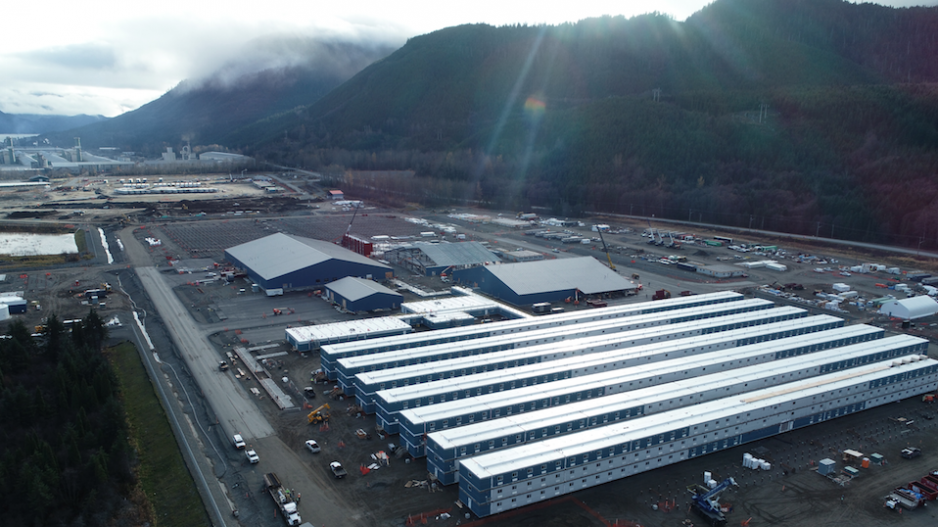
Three of the major energy projects – the Site C dam, the Coastal GasLink pipeline and LNG Canada – are proceeding with the support of the BC NDP government, while one – the Trans Mountain pipeline expansion – is moving ahead despite opposition from the provincial government.
Despite the resource sector’s relative resilience this year, industry associations say the NDP government will need to address some pain points to ensure long-term competitiveness, notably in forestry and mining.
Forestry accounts for roughly 3% of B.C.’s GDP, according to Natural Resources Canada. But the industry got hammered last year. Six sawmills closed permanently, but lumber prices soared this summer. Many forestry companies that had been forced to eliminate shifts were therefore able to bring workers back.
In its recent third-quarter financials, Canfor Corp. (TSX:CFP) reported operating income of $347 million, which is a $289 million increase over its 2020 second-quarter earnings. The company cited an “unprecedented” surge in lumber prices for the increased earnings.
In its third quarter financials, West Fraser Timber Co. (TSX:WFT) reported $454 million in earnings from its lumber segment compared with $66 million in 2020’s second quarter. However, the company noted that most of the earnings increase came from southern yellow pine produced by its American sawmills.
The “unprecedented” jump in lumber prices was due, in part, to supply issues, as a number of North American sawmills curtailed production, in some cases due to pandemic restrictions. In other words, the recent record high lumber prices are likely a blip.
The Mining Association of BC recently warned that, without measures to address the competitive disadvantage they face from high carbon taxes, 14 operating mines in B.C. could shrink to just five by 2040
Over the longer term, however, the industry faces ongoing challenges. They include U.S. softwood lumber duties, a shrinking timber supply, carbon taxes, increasing regulation and a stumpage system that critics say isn’t responsive enough to market and price volatility.
The Council of Forest Industries (COFI) has asked government to reform the stumpage system to make it more responsive to markets and prices, and draw hard lines around the working forest to prevent any further loss in the timber supply.
While the opposition BC Liberal Party committed to some of those reforms, George Heyman, the NDP government’s minister of Environment and Climate Change, made it clear during a debate that an NDP government is wary of changing the stumpage system.
The NDP has pledged to give preference to high value-added manufacturing – cross-laminated timber, for example – when allocating forest tenure.
“If we play with stumpage, we open ourselves up to softwood lumber tariff disputes from the United States yet again,” Heyman said. “What we do want to do is ensure that we look for ways to add value to our product, therefore employing more people.”
Bob Brash, executive director for the Truck Loggers Association, questions the assumption that companies will make the necessary investments in B.C. to develop these higher-value manufacturing facilities without a competitive landscape.
“The remanufacturing and value-added sectors in B.C. require significant capital investment to meet … government’s ambitions,” Brash said. “However, they cite uncertainty in the land base, high cost structures, excessive taxation rates, labour shortages [and] industrial land erosion as some of the many factors stopping such investment.”
Meanwhile, mining has generally done well in B.C. in recent years. But as an energy-intensive trade-exposed industry, its longer-term prospects are in some doubt.
Because mines and pulp mills export the goods they produce, they compete with producers elsewhere. They also consume a lot of energy, and, in B.C., that means high carbon taxes. But because few jurisdictions in the world have carbon taxes that are as high as B.C.’s, it puts the province’s industries at competitive disadvantage.
The Mining Association of BC recently warned that, without measures to address the competitive disadvantage they face from high carbon taxes, 14 operating mines in B.C. could shrink to just five by 2040.
As for oil and gas, the provincial government has come under increasing pressure to end to end the deep well credits for natural gas producers that offset the high cost of deep horizontal drilling by forgoing oil and gas royalties for the government.
Stewart Muir, executive director for Resource Works, cautions against any moves that would deter an industry that has invested billions in B.C.
Abolishing drilling credits, he wrote recently, “would ensure that capital investments would not be made in B.C.”
(This article first appeared in Business in Vancouver)




